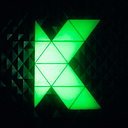Acala Investment
We are pleased to announce we invested in the Acala Network project, it’s The Acala Network is building decentralised finance infrastructure for the much anticipated Polkadot ecosystem. The core offering will be a stablecoin, A secondary offering of the Acala Network will be a liquidity protocol for staked digital assets. Utilizing Acala’s to-be-released liquidity protocol, staked Polkadot (“DOT”) tokens that are earning yield can become liquid and tradable.
KR1 took part in the seed round alongside Polychain Capital, P2P Capital, HashKey, SNZ and other prominent investors.
George McDonaugh, Managing Director & Co-Founder of KR1 commented:
“Stablecoins have become a central pillar in the crypto ecosystem with Maker’s DAI sparking the $1bn USD DeFi movement on Ethereum. Stablecoins are currently siloed in their respective blockchains, so a stablecoin that works across any chain could be a game-changer for any DeFi product and the basis for rocket fuelling the whole space. We are thrilled to be able to support them at this first stage of their project.”
Revenue from Cosmos Staking Yields
We are pleased to announce some good news on our Cosmos Staking Revenue. Since June 2019, our last staking announcement, we generated a further 54,194.25 Cosmos ATOM tokens from staking activities of which 37,274.63 ATOM were sold at an average price of $4.51 USD per ATOM token, generating $168,197.12 USD for the Company.
KR1 has generated a total of over 76,665.25 ATOM from staking yields in the twelve months since the Cosmos network launch on 14 March 2019. Over this 12 month period the Company has realised a total of 59,745.63 ATOM at an average price of $4.86 USD/ATOM. This netted the company a total of $290,447.12 USD in realised accrued revenue from staking yields over the 12 months .
What next for our Cosmos Atom Staking?
The Company plans to maintain its staking of a large majority of its ATOM position to continue generating revenues for the Company’s operations going forward.
The total amount of ATOM generated is highly dependent on the percentage of participants in the network that are actively staking their ATOM. Whilst KR1’s returns have been strong, a higher than initially anticipated percentage of ATOM were staked by other participants due to the popularity of the network, which led to nominal staking returns being lower than originally estimated in the Company’s ‘Revenue from Cosmos Staking Yields’ announcement in May 2019.
The Company takes a long-term view on the price of ATOM, implementing a strategy where if the asset price is under pressure and below a certain price threshold, the Company will not liquidate its accruing staking yields and postpones the realising of yields until the market recovers.
This staking strategy has led to a more favourable average realised price of $4.86 USD/ATOM, versus an average daily price of $4.07 if the Company had sold its proceeds on a daily basis.
Extreme Bitcoin & Crypto Volatility
Earlier in March Bitcoin had it’s second-largest ever drop in price, pretty much all other crypto markets similarly. Since then everything has recovered but that day many people and entities were caught off guard, even some crypto hedge funds shutting down. Read our explanation on what was going on and how we navigated everything below.
Social Distancing & Crypto
It‘s been pretty much business as usual in our blockchain-nerd days’ as we’re remote-first anyway, most of our portfolio companies are as well. We have held all of our meetings in Zoom or Google Hangouts for years. At crypto conferences, we fist bump and rarely shake hands as it’s a medieval practice. We feel COVID has had little impact on work being done in the crypto space, though in terms of raising capital, that’s a different matter perhaps. Conferences have all been cancelled or gone virtual like Ethereal and Epicenter.
Which means more focus on work and virtual collaboration. Welcome to the Zoom generation.
Brrrrrrrrrrrr…
“Furthermore, this does not count the policy of quantitative easing that went to inflate asset values and increased inequality by benefiting the super rich. Remember that bailouts come with printed money, which effectively deflate the wages of the middle class in relation to asset values such as ultra-luxury apartments in New York City.”
We are, as you know, very bullish on Bitcoin, Ethereum, Cosmos and other crypto assets that share these ‘hard-asset’ qualities. Once we are through the shock of COVID and regroup we believe we are on the verge of huge change.
Part One: 2008 & Satoshi, who?!… Part Two: 2020
In 2008 we had the financial crash, which has been eclipsed by 2020’s COVID catastrophe. As we wrote about in our blog we believe we are now about to enter the Decade of Decentralisation with COVID being the catalyst. In 2008 Satoshi Nakamoto’s message embedded in the Coinbase of the first block focused on the insane measures governments and central banks took back then. Welcome to 2020, what would Satoshi say today?
The Times 03/Jan/2009 Chancellor on brink of second bailout for banksWe will come out of this pandemic seeking more resilient systems, anti-fragile ways of coordinating ourselves and our supply chains. Open, digital and trust minimised networks will rise and become central to this new world because clearly, we can’t trust a system where everyone’s wellbeing is placed in the hands of leaders that put politics before science. We need systems where this isn’t possible.
Another KR1 Award!
KR1 in the Media
Keld’s Central Bank Digital Currency article was published in City AM, see here.
KR1 is Europe’s leading digital asset investment company supporting early-stage decentralised and open-source blockchain projects. Founded in 2016, KR1 has been a notable first investor in many key projects that will power the decentralised assets, platforms and protocols that form the emerging Web3 infrastructure.
In the spirit of the open and decentralised movement, any individual or institution can buy publicly-listed KR1 shares through the London-based NEX stock exchange.
Follow us on Twitter for more frequent updates.
